
In part 1 of this two-part article, the E-Commerce Times explored Linux’ potential to win market share from Solaris, Sun’s proprietary version of Unix, as Linux is used to power ever more mission-critical functions.
What is the future of Solaris in a world where Linux shares the limelight? In part 2, we will examine why the rise of Linux may not be the death knell for Solaris, and will analyze Sun’s rationale for offering Linux as an option on its Intel-based servers.
When Sun Shines on Linux
It may seem odd that despite Linux’ potential threat to Solaris’ viability, Sun has not been participating in Linux fear-mongering. In fact, the company recommends Linux to several of its customers, depending on their needs, Sun spokesperson Bill Moffitt told the E-Commerce Times.
Several factors may make Linux the right operating system choice for a customer, Moffitt said. He noted that Linux provides buyers with a rapidly changing architecture, the ability to obtain the latest technology as it is released, direct access to a community of developers who can provide support, and the ability to deploy on arbitrary x86 hardware.
Also, when customers are in need of edge services dependent on other projects, Linux might be the way to go, he added. This may include Internet-dependent services, such as conferencing or Web services. In addition, more applications are available for Linux than for Solaris on x86 boxes.
Unlike with Linux, Solaris users cannot download updates and other new technologies at the moment they first become available. “Because Solaris is fully tested and enterprise-ready [before any updates or new versions are released], it just takes longer for the technology to get baked into the OS,” Moffitt said.
One Throat To Choke
However, the proprietary OS does have its place within the enterprise. Yankee Group senior analyst Dana Gardner described Solaris as ideal for big, fast servers that manipulate high-transactional, high-data processes requiring a high level of reliability and scalability.
“That’s why we position Solaris as a feature-filled, mature OS that is fully integrated, regression-tested, [and] can work on either 32- or 64-bit hardware platforms,” Moffitt said. “Solaris also comes with an application binary compatibility guarantee. Future versions of Solaris will always be able to run your applications — an important piece of investment protection.”
Moreover, Sun stands behind Solaris from both a support and a legal standpoint, Moffitt added.
“As Scott McNealy says, it’s a ‘one-throat-to-choke’ service,” he said. “If there’s a problem, you know who to call.”
The 64-Bit Question
There are other factors barring Linux’ progress into Solaris’ core strongholds as well. For example, although Linux is starting to make inroads in the 64-bit space, Sun’s SPARC hardware platform remains a top choice for companies that want to take advantage of this architecture — and 64-bit SPARC processors running Linux have not been widely used to date (*correction).
According to Moffitt, 64-bit processors provide greater scalability and more “future-proof” implementations than 32-bit chips. Because a 64-bit chip can handle up to 8 GB of main memory (vs. 4 GB in a 32-bit system), it can better manage processor-intensive tasks.
“If you have a large database system, you want to be able to have as much of that database in memory as possible” so that it can manipulate data faster, he said, adding that this feature allows a degree of expandability that a 32-bit architecture cannot match.
Also, contrary to popular belief, 64-bit servers need not be prohibitively expensive. A single-processor SPARC IIi 1U Sunfire V100 server with Solaris preinstalled costs $995, according to Moffitt.
Uneasy State
Although both operating systems may be able to coexist, Solaris still is in a tricky position — and application developers may be its Achilles’ heel. According to Gardner, developers have powered much of the momentum behind Linux because no licensing fees are required (SCO’s ongoing lawsuit aside), enabling them to reap more profit from their applications.
Moreover, as applications become less OS-dependent over time, this trend could hamstring Sun’s ability to charge a premium for Solaris’ functionality, ultimately shrinking the system’s market share, Gardner told the E-Commerce Times. Sun’s stock price, which is hovering at about US$4 per share, indicates many Wall Street observers do not have sufficient confidence that Sun will overcome the Linux challenge without suffering damage to its profitability, he said.
Still, IDC analyst Jean Bozman told the E-Commerce Times that Linux’ supposed incursion on Unix market share does not apply exclusively to Sun. In fact, in the second quarter of 2003 (Sun’s fiscal fourth quarter), Sun regained the number one position in the Unix server market with a 33 percent share.
Indeed, the real enemy may not be Linux: Despite all the hype the open-source OS has received, IDC has predicted that in 2007, sales of Microsoft Windows servers will generate more than twice as much revenue as Linux server sales.
Project Orion
Meanwhile, Sun is developing a software strategy known as “Project Orion.” Gardner described Orion as a way of selling and managing a single package of server applications that provide businesses with a simplified, conclusive way to pay for software in one-stop fashion.
According to Bozman, Orion will be able to run on both Linux and Unix, much as Java does.
“There’s quite a bit more participation between Sun and Linux than people realize,” she said.
Perhaps, with Orion in place as a new revenue stream, a showdown between Solaris and Linux will seem beside the point. Instead, as Gardner said, “People will choose the right tool for the right job.”
*Editor’s Correction Note: In the original version of this article, we incorrectly stated, “and 64-bit SPARC processors run Solaris, not Linux.” In fact, SPARC processors can run Linux, though Linux-on-SPARC has not gained significant market share.





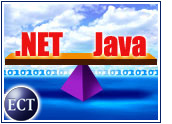




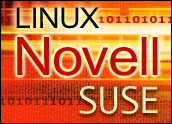
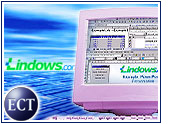
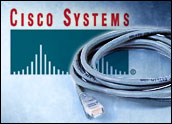
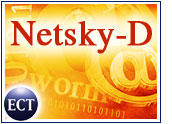











































I’m not a grammar nazi, I’m not worried about how liltingly your style flows across the page, but it’s nice when the facts stated are correct, or at least close to correct.
QUOTE:
Also, contrary to popular belief, 64-bit servers need not be prohibitively expensive. A single-processor SPARC IIi 1U Sunfire V100 server Latest News about Servers with Solaris preinstalled costs $995, according to Moffitt.
UNQUOTE:
I checked on google, and found it for $2800 to $3500. Quite a bit more than the $995 listed. Do you have a single source where I can get a V100 for <$2000? I can’t find one.
Hi,
This is Robyn Weisman, the writer of this story.
<p>
Here are my responses to nathanh’s post…
<p>
nathanh: "There are other factors barring Linux’ progress into Solaris’ core strongholds as well. For example, although Linux is starting to make inroads in the 64-bit space, Sun’s SPARC hardware platform remains a top choice for companies that want to take advantage of this architecture — and 64-bit SPARC processors run Solaris, not Linux."
<p>
"Starting to make inroads? 64-bit SPARC processors run Solaris, not Linux?
<p>
"Linux has been on 64-bit CPUs since 1995 with the 64-bit Alpha port by Linus Torvalds himself. You can now run Linux on the 64-bit PowerPC, the 64-bit Itanium, the 64-bit AMD Opteron, and the 64-bit IBM zSeries (aka S/390). Far from only "starting to make inroads", Linux has blazed the damn trail.
<p>
"And Linux was on the 64-bit SPARC in 1996. The same 64-bit SPARC processor that apparently only runs Solaris, not Linux. The work began in 1994 and was considered mature in early 1996. RedHat released a 64-bit SPARC version of Linux, August 1996.
<p>
"Linux has been 64-bit capable for nearly a decade, and that includes the 64-bit SPARC processor."
<p>
Response:
<p>
I just spoke with Dana Gardner of The Yankee Group who was one of the analysts for this story. He said that Sun is in fact working on a project to run Linux on SPARC. Sun announced its plans to productize this commercially 18 months ago and first made it commercially available about a year ago.
<p>
However, this has relatively small market share and is only starting to take off. When I wrote about Linux making inroads, I was talking about market share. I apologize if there was any confusion about what I meant.
<p>
Gardner went on to say Linux has been able to run on various 64-bit processors, but it’s an esoteric point in his opinion, one that doesn’t necessarily relate to Sun or the competition Sun is presently facing off against.
<p>
The question, he explained, is more that Linux as a feasible alternative on 64-bit has been a long time in coming and has in the past held it back from being a major player in the corporate data center.
<p>
It’s been a gradual rollout, Gardner said. However, Linux on 32-bit systems has been the fastest growing platform, and, if past indicators mean anything, this could be a harbinger for 64-bit, though it hasn’t happened yet.
<p>
nathanh: "’Because a 64-bit chip can handle up to 8 GB of main memory (vs. 4 GB in a 32-bit system)’
<p>
"Oh, for pete’s sake. This article is simply beyond redemption. 8GB main memory? If the article makes mistakes on simple matters like this, then how can I trust the rest of the content to be accurate?"
<p>
Response:
<p>
According to Aberdeen Linux analyst Bill Claybrook, a 32-bit system has 4GB of addressable memory although the AM ount of real memory may be much smaller such as 256MB.
<p>
"A 64-bit system can address over a billion GB (gigabytes) so you can have very large virtual memories and very large real memories such as 250GB. This is one of the reasons that the move to 64-bit is important, you can have more memory in a machine," he said.
<p>
"What I AM saying is that a 32-bit processor can address 4GB of memory (real or virtual) and a 64-bit processor can address over one billion GB of real or virtual memory."
<p>
"In an SMP (symmetric multiprocessor) machine, all the processors share a large chunk of main memory; however, each processor usually has its own small local cache memory in which to store some data and instructions, but generally with SMP machines, all processors share the same memory," Claybrook said.
<p>
Again, I’m sure there are ways around this, but I was taking an e-commerce angle to the story. I don’t believe the average enterprise is necessarily interested in all the possibilities, just the ones that work for them now and will do so in a cost-efficient way in the future. That’s why so many enterprises are going gaga over Linux in the first place.
<p>
Thank you.
"I just spoke with Dana Gardner of The Yankee Group who was one of the analysts for this story. He said that Sun is in fact working on a project to run Linux on SPARC. Sun announced its plans to productize this commercially 18 months ago and first made it commercially available about a year ago."
_
It really doesn’t matter what Sun’s plans for Linux are. The Linux community wrote the port, without Sun, near 7 years ago. Linux was running on the 32-bit SPARC in 1994 and the 64-bit SPARC in 1996. It was actually useful long before 18 months ago. Major distributors (Debian, RedHat, Suse) have been selling Linux/SPARC distributions for years. It’s nice that Sun is finally joining the game (late, as always), but it hardly matters.
_
To recap: the 64-bit UltraSPARC version of Linux (UltraLinux) was written by 3 independents. It was based upon the 32-bit SPARC version of Linux (S/Linux) from 1994. David Miller booted the first 64-bit UltraLinux kernel in 1996. It was merged into the official Linux kernel only a few months later.
_
My concern was always with your claim that Linux doesn’t run on the UltraSPARC CPU. It has done so for a very long time, and Sun wasn’t the driving force behind the project. Users have been using UltraLinux long before Sun even cared to notice.
_
"It’s been a gradual rollout, Gardner said. However, Linux on 32-bit systems has been the fastest growing platform, and, if past indicators mean anything, this could be a harbinger for 64-bit, though it hasn’t happened yet."
_
It has been gradual because 64-bit CPUs are still expensive and relatively rare. There is not much to analyse. When the 64-bit CPUs can be bought for $100 then they will be everywhere, and Linux will be ready because it has nearly a decade of 64-bit history behind it.
Robyn,
First off, if you’re going to respond, please be so kind as to quote ONLY the parts of the message you are responding to, and remove the HTML you got from view source, since this forum doesn’t appear to support it. The original message is already there, so there’s no need (or excuse really) to quote the whole thing.
Anyway, in your article you say that 32 bit architecture can only address 4 gigs of RAM. This is no longer true. While there are issues with individual applications accessing more than 4 gigs, most modern intel x86 hardware can handle 8 to 16 gigs of ram. This limitation affects applications like Postgresql, which would be limited to 4gig max segments for things like sorts or shared_buffers, but in general isn’t a big road block.
Howevern, what nathan was pointing out was the blunder when you said 64 bit hardware can access 8 gigs of ram. In fact 64 bit hardware can access 4gig*4gig ram, or about 1.8*10E19 bytes. That’s a lot, by the way, about 9.2*10E18 times what you listed. THAT was nathan’s point.
Linux has been running IN PRODUCTION on 64 bit hardware for quite some time. You just wouldn’t know because you don’t have to pay someone money to do it. It’s a great match for things like postgresql databases to put linux on large n-way ultra sparc machines.
Your article says, and I’m quoting here:
"Sun’s SPARC hardware platform remains a top choice for companies that want to take advantage of this architecture — and 64-bit SPARC processors run Solaris, not Linux."
Notice that didn’t say Sun doesn’t make a distribution of linux, it said that 64 bit Sparc procs don’t run linux. Since I’ve tested it myself many times here at work, I do know that they can run linux, and often linux on Sparc outruns Solaris on Sparc quite handily.
You made a mistake, and no AM ount of justification in your response excuses that mistake. You need to put a clarification in the article (please contact your editors to have that clarification made, since this is obviously a pretty big mistake and makes people think Linux can’t run on 64 bit Sparc hardware when in fact it can. I’m trusting you to "do the right thing" and fix this.)
Right after that, there’s a bit of misleadingness when it’s mentioned that "64-bit servers need not be prohibitively expensive. A single-processor SPARC IIi 1U Sunfire V100". The V100 has a 550 or 600MHz CPU and can hold a glorious 2 gigs of RAM and two IDE hard drives. Hardly enterprise class hardware. My brand new Intel 1U servers are dual 2800 GHz PIVs that can hold up to 12 Gigs of ram, and they can hold two IDE OR U320 SCSI hard drives. They cost about $2700 each. I’m willing to bet that the V100 is quite a bit more expensive. Real 64 bit hardware (i.e. Ultra SCSI based, capable of >2 gig of memory) is NOT cheap.
Further evidence comes from this jewel:
QUOTE
"Moreover, Sun stands behind Solaris from both a support and a legal standpoint," Moffitt added.
"As Scott McNealy says, it’s a ‘one-throat-to-choke’ service," he said. "If there’s a problem, you know who to call."
UNQUOTE
What utter rubbish. Sun, like Microsoft, only offers to indemnify you for your costs to them. I.e. you get sued for 100 gazillion dollars, and Sun will gladly refund your license fees. If you can prove it was Sun’s fault you got sued.
OF course, the whole lawsuit thing is a giant red herring anyway, as only one known lawsuit based on such a situation is findable in a lexisnexis type search, and it was promptly tossed out on its ear.
And what about RedHat? Can’t I have them be my "one throat to choke" vendor?
Let’s face it, IT managers who want someone to blame aren’t doing their job, i.e. carefully testing entire systems, hardware and software, before deployment. It may make one feel better to have someone else to shout at when the production servers go down, but you’re still losing money. What matters most is "does it work?" And Linux (RH, Suse, Debian et. al.) and Solaris BOTH just work.
Please do the community you report for a favor, and actually sit down with some of this hardware with a couple of Solaris AND Linux gurus and learn more about it. It’s fascinating, and you’ll find your current knowledge to be quite lacking compared to where it should be in order to report on such issues. Here’s to hoping you can expand your horizons a bit.
Glad to see you guys made the correction to the article. You wouldn’t believe how many authors I’ve seen who hemmed and hawed over factual errors but refused to make the mistake right.
Salute!
Here’s one:
http://www.sun.com/servers/entry/v100/details.html
Note that that price is 1 40 gig hard drive and 256 Megs of RAM. I have a dual PPro 200 with 256 Megs of ram and an 80 gig hard drive under my desk that’s probably a good match for that configuration.
Typical pricing for that box is significantly more (i.e $2500 to $3000). Just adding enough memory to get to 1 gig adds $400 to the price.
But you are right, they do have it for $995 in a base configuration. My bad.
Thanks for the kind words — we are committed to providing accurate and compelling content, so we appreciate reader feedback and look into all comments made.
"There are other factors barring Linux’ progress into Solaris’ core strongholds as well. For example, although Linux is starting to make inroads in the 64-bit space, Sun’s SPARC hardware platform remains a top choice for companies that want to take advantage of this architecture — and 64-bit SPARC processors run Solaris, not Linux."
_
Starting to make inroads? 64-bit SPARC processors run Solaris, not Linux?
_
Linux has been on 64-bit CPUs since 1995 with the 64-bit Alpha port by Linus Torvalds himself. You can now run Linux on the 64-bit PowerPC, the 64-bit Itanium, the 64-bit AMD Opteron, and the 64-bit IBM zSeries (aka S/390). Far from only "starting to make inroads", Linux has blazed the damn trail.
_
And Linux was on the 64-bit SPARC in 1996. The same 64-bit SPARC processor that apparently only runs Solaris, not Linux. The work began in 1994 and was considered mature in early 1996. RedHat released a 64-bit SPARC version of Linux, August 1996.
_
Linux has been 64-bit capable for nearly a decade, and that includes the 64-bit SPARC processor.
_
It’s pretty sad when journalists can’t do the most basic investigative journalism (hint: google).
_
"Because a 64-bit chip can handle up to 8 GB of main memory (vs. 4 GB in a 32-bit system)"
_
Oh, for pete’s sake. This article is simply beyond redemption. 8GB main memory? If the article makes mistakes on simple matters like this, then how can I trust the rest of the content to be accurate?